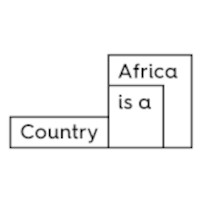Photo by Aynaz shahtale on Unsplash
BOOK REVIEW: “Racial Blackness and Indian Ocean Slavery: Iran’s Cinematic Archive “The little-known history of Iranian cinema uncovers its overlooked history of slavery and anti-blackness.
BY Priscillia Kounkou Hoveyda 20 December 2023
As is often the case with important books, it is difficult to read Parisa Vaziri’s book, Racial Blackness and Indian Ocean Slavery: Iran’s Cinematic Archive (Minnesota Press, 2024). In her first book, the scholar in Comparative Literature at Cornell University takes a deep dive and up-close look at blackness in Iranian cultural production: from the Iranian commercial films of the 1950s and 1970s known as fīlmfārsī, to the filmic siyāh bāzī performances—that is Persian blackface cinema—and the documentation of zār through Iranian ethnographic films from the late 1960s, which she argues, “capture and repress zār’s historical relation to African captivity” (Zār is an assemblage of beliefs and rituals centered on spirit winds that afflict the self with physical and psychic pain).
It is rare to read such intellectually honest work in Iranian scholarship related to the Indian Ocean, as most characterize the legacy of the Indian Ocean slavery as nonracial. Vaziri however connects Iranian nationalist projects such as the Pahlavi nationalist projects as attempts “to racialize Iran as Indo-European, white.” (The Pahlavi dynasty was the last Iranian royal dynasty, ruling for almost 54 years between 1925 and 1979). Every Iranian has heard at least once of the Aryan or Indo-European thesis, a nationalist concept that heavily informed Iran’s self-conception as white, yet, there has been widespread reluctance in traditional scholarship to critically process that discourse in relation to racial blackness. In her book, Vaziri also observes the Persian filmic siyāh bāzī and concludes that “black play whitens Iran.”
From the onset of Racial Blackness and Indian Ocean Slavery, Vaziri makes it clear: the pre-revolutionary Iranian cinematic landscape, and more, has not only portrayed blackness but represented it through an anti-black lens. Throughout her work, Vaziri establishes the idea of the “immemorial, unthought and empirically forgotten nature of the itinerary of racial blackness.” From the mise-en-scène to montage in all cinematic formats, blackness is never consciously thought about. And the numerous Iranian films Vaziri looks into confirm the unaddressed antiblackness of the pre-revolutionary Iranian cinematic archive. It is “unremembered,” she argues, and yet, indeed in its representation, “unforgettable.”
Farukh Ghafārī’s Shab-i Qūzī, or Night of the Hunchback, a black and white film from 1964 is one of the many films the scholar looks at; in particular a scene with a white actor with blackface as he enters screen and asks in an almost unintelligible Persian:
whether his master has enjoyed the music: “Please allow this house-born slave [ghulām-i khānahzād] to entertain you. Musicians, play!” he cries, as the unmoved master sips smoke from his hookah. The “house-born slave” in blackface pours liquid from the ewer on the mantel into a cup small enough to be a shot glass and places it on his forehead as he shimmies, bending backward low enough so that the master can grab it.
Persian blackface is still passionately defended by many Iranians in and outside of Iran. And Vaziri’s book addresses with precision the proponents of the siyāh bāzī’s “racial innocence,” who “insist upon the singularity of the siyāh/black.”
Vaziri also examines the post-revolution film of Bahram Beyzai, Bashu, the Little Stranger released in 1989. Beyzai, now 84, is presented on Stanford’s Iranian studies website, as an “award-winning Iranian filmmaker, theater director, playwright, educator, and scholar of the history of Iranian theater.” But he is also known for having written and produced blackface performances, including one at Stanford university in 2016. For siyāh bāzī according to the Iranian “ostad” (master) to many, is not blackface performance but rather an ancient tradition he moralizes to be culturally specific.
Vaziri’s work disrupts the predominant Iranian narrative of racial innocence pushed by scholars such as Beyzai and presents us with more than 250 pages of analysis as to how not only Iranian society has always been racialized through its hidden stories of African migration and black presence in the Gulf and national efforts to self-identify white, but it has also formed representations in Iranian cinema that are predominantly antiblack. Vaziri’s book goes beyond observing the erasure of black narratives in the Iranian cinematic archive, it exposes the Iranian pre-revolutionary cinematic archive for its profound antiblackness.
With this impressive work, Vaziri confronts the [unacknowledged] white Iranian gaze and pushes convincingly against the dominant narrative that excludes as she writes, “consciousness of a perspective that might be called black.” Her analysis of representation and evocations of blackness in Iranian films often considered Iranian canon centers racial dynamics, ignored in Iranian reality. She peels through the black and white documentaries and experimental films on zār that she says, often fetishizes blackness and proves an “ethnographic fascination with the African spirit ritual.”
Iranians will often say, “we don’t have black people in Iran,” including to black Iranians like myself, a statement that my experience taught me, is not so much an affirmation of a believed fact as so much as it is a reflection of the impossible admission of the inherent antiblackness Iranian consciousness is imbued with. If we don’t have black people in Iran then we can’t be antiblack. And since black people in the south are only black “because of the sun” as it is still widely believed, everything will continue to be done to decontextualize blackness in Iran.
It is in the end, ignoring that a perspective like that of a black Iranian woman like myself could be formed and the feeling of being racially stigmatized as I watch, Farukh Ghafārī’s Night of the Hunchback when the white actor in blackface kisses the “foot of his master,” impossible, hence invalid. It is universally known that films mimic reality and Vaziri’s book is a strong testament.
From the pre-revolutionary films, to the filmic siyāh bāzī and the ethnographic documentaries about zār and the south, not once has Iranian traditional scholarship pondered on the racial implications of such a body of “works.” It is as if blackness was indeed not real, allowing for antiblackness to thrive. And when challenged by black Iranians through for example, “the first-ever media project to be authored by Black Iranians about being Black and Iranian”, the Collective for Black Iranians, that has called practices such as siyāh bāzī antiblack, the proponents of Iranian racial innocence take offense and claim “foreign context contamination,” stripping black Iranians everywhere of the agency of forming points of view independent of the exclusionary predefined understanding of what siyāh bāzī should be understood as.
With this work, Parisa Vaziri leads as one of the few researchers on Iran who processes its cinematic archive through a race lens and carves out space for the existence of Black Iranian narratives and forms of self-representations. With this book, alongside a growing number of scholars on Iran, she refuses to perpetuate the antiblack erasure of racial blackness in Iranian reality.
Racial Blackness and Indian Ocean slavery: Iran’s Cinematic Archive (2023) by Parisa Vaziri is available from The University of Minnesota Press.
About the Author
Priscillia Kounkou Hoveyda is a Freetown-based filmmaker, creative director and founder at the Collective for Black Iranians, a creative and critically conscious production as well as Haus of Salone, a creative space centering stories from, for and by a Black and African point of view.






